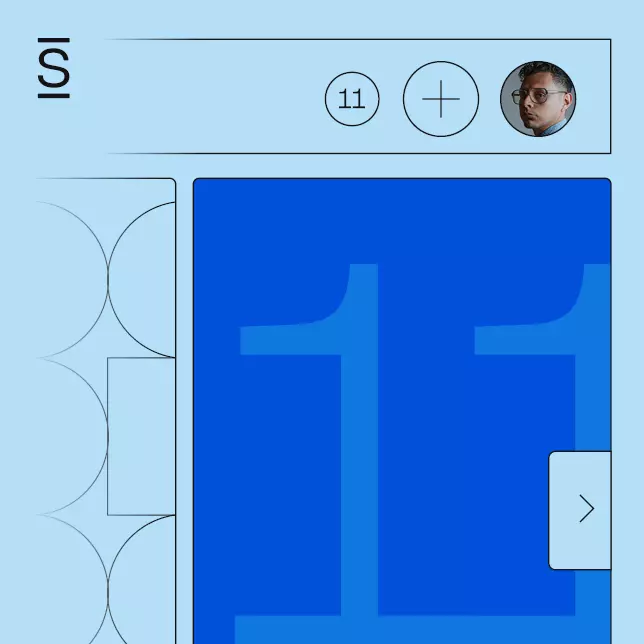Does your intranet have everything but the kitchen sink? There’s usually lots of extra baggage weighing down many internal communications (IC) teams and their intranets, complicating processes and making relevant information impossible to find. A purpose-built, custom intranet streamlines these processes by deconstructing exhaustive platforms, leaving behind only what’s essential for employees to flourish. And it all starts with identifying needs.
To identify and clarify your teams’ needs, here are key questions to ask:
- Do you want to reinvent the wheel when updating your intranet, or benefit from the collective trial and error of other IC professionals who have come before you?
- Would you like employees to engage with your content regularly via an intuitive user experience—and get a morale boost based on their personalized results?
- Should every update to your intranet require IT change orders and the corresponding wait time, making the process uncomfortable and frustrating for everyone involved?
- And should your intranet house every outdated bit of internal information since the company was created?
We’ll explore each bullet in turn, starting with why custom-built sites may sound amazing, but they often are not.
Custom-built intranets lack ‘purpose-built’ flexibility
Custom-built intranets can start off as exciting—and planning out features for your company’s intranet feels like the right way to go when faced with the seemingly ‘one size fits all’ alternative. But recreating the wheel is unwise, inefficient, time intensive, and expensive.
Heavily customized intranets often result in failure because they don’t drive employee engagement and they’re not easily changed once you’ve committed to a specific platform and design. The customized intranet option isn’t innovative, as it relies on traditional models with frameworks that lack the tools needed to analyze and fix the problems that dampen engagement.
Purpose-built custom intranets offer flexibility and are ever-evolving platforms armed with the latest intranet technologies, including automatic updates. Not only that, but they use prescriptive analytics to drive engagement and prevent failure, offering real-time data that shows you where the trouble spots are.

And thanks to this actionable intel, solutions require a mere shift in focus instead of a whole change order process. Let’s explore a bit more on why being IT-dependent is undesirable here.
IT-dependant capabilities dampen engagement
The average custom intranet takes approximately 15 months to implement, according to a recent survey by Modalis Research. This is risky and takes up valuable resources. Maintaining momentum for any project spanning this long is difficult. Leaders change, priorities change, and momentum can be lost. You need a functional intranet now, not more than a year from now.
Learn whether you should build or buy your intranet
Also, technical complexity creates a dependency on IT. This creates tradeoffs and backlogs, and businesses can’t update information at the speed of business. Eventually, customizations become obsolete and need to be redone, with many companies finding themselves in a perpetual state of “about to launch” and falling further behind technologically.
To say customization inhibits continuous innovation is an understatement. Purpose-built custom intranets utilize a true cloud/SaaS approach ensuring you can incorporate the latest innovations, UI, and security enhancements as soon as they become available. And an intranet’s user interface is critical to engagement success.
Tech-heavy UIs are frustratingly complicated and impersonal
Traditional intranets have tech-heavy UIs that are complex to navigate and laden with folder schemas that frustrate employees and slow down productivity.
Poor UI is the top reason intranets fail. Traditional intranets are outdated and cumbersome to use. If your intranet isn’t improving your employee experience, it’s killing it. If you want a successful intranet, you must choose one that is intuitive from day one, as most employees have a low tolerance for complexity. And once a system is deemed to be unworkable, it’s incredibly challenging to change that perception!
Information overload is a very real challenge as well.
When employees are forced to navigate all content and rely on traditional metadata, manual hardcoding, and filters to find what they need, they often give up. No one likes noise and clutter. Irrelevant information hurts the employee experience, wastes valuable time, and lessens chances of future adoption, leading to eventual intranet failure.
A purpose-built intranet gives your team the ability to personalize their intranet experience, so they receive the right information and content right when and where they need it. This personalization saves your employees a lot of time and frustration.
Your intranet should cultivate a personalization framework that creates 1,000 targeted experiences for 1,000 employees. And that is how you create a great employee experience.

Content dumping grounds are never good
Traditional intranets lack the tools to prevent your intranet from becoming a junk drawer. This deficiency leads to your platform becoming a content dumping ground, which is another top reason for intranet failure. Once users find outdated information, their trust is compromised.
You’re probably thinking, “I wish there were a way I could magically declutter all of the outdated content on my intranet.” We thought that would be handy too, so we’ve added the industry’s first auto-governance engine; It’s designed to enhance your intranet’s credibility and simplify cumbersome processes, as keeping it simple just makes sense.
To be unified in purpose, employees need information they can trust, communications that are relevant, and a digital workspace that improves their work-life balance rather than adding another tedious to do on an already long list. A purpose-built custom intranet supports this balance.
Reach out for a demo to see intranet excellence in action!

















